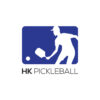Frequently Asked Questions
The Serve
- The server starts the point by serving the ball to the diagonal service box. The serve must bounce within the service box and clear the kitchen line
- There is no second serve in pickleball; the server only gets one chance to make their serve
The Return
- The returner can hit the ball to anywhere within the opposing team’s court
- The serving team must let the return bounce before playing their shot
- Once the ball bounces once on each side, players are allowed to take the ball out of the air (hitting without the ball bouncing first)
The No-Volley-Zone
- The area between the net and service line is called the no-volley zone, or more commonly known as the “kitchen”
- Players are not allowed to take the ball out of the air while standing inside the kitchen
- If a player takes a ball out of the air and their forward momentum causes them to step into the kitchen, the point is awarded to the opposing team
Winning Points
- Teams win points by hitting outright winners (when they hit the ball inside the opposing team’s court and the ball bounces twice), or when the opposing players miss their shot in the net or out of bounds
- Games are played to 11, won by a difference of 2. Points are only awarded to the serving team
- There are three numbers to keep track of in doubles scoring. For example, [8]-[7]-[1]
- The first number is the serving team’s score
- The second number is the returning team’s score
- The third number indicates which person on the team is serving (1 or 2)
- Keeping Track of Serve
- If Player 1 on the serving team wins the point, the players on the serving team will switch sides (even/odd), and Player 1 will continue to serve [x]-[x]-[1]
- If Player 1 on the serving team loses the point, Player 2 on the serving team will serve (on the same side he was standing), and the score is [x]-[x]-[2]
- If Player 2 on the serving team loses the point, the serve now goes to the returning team (called a “side-out”), and the score is [x]-[x]-[1]
- Each time a side-out occurs, both players will get to serve, and the score is [x]-[x]-[1]
- The one exception is the team who serves first, where only one player serves. The game starts at [0]-[0]-[2]
- The first server will always start on the even court
- Games are played to 11, won by a difference of 2. Points are only awarded to the serving player
- For example, the score is [8]-[7]
- The first number is the server’s score
- The second number is the returner’s score
- If the serving player wins the point, they will continue to serve
- If the returning player wins the point, they will get to serve the next point
- If the serving player’s score is even, they will serve on the even court
- If the serving player’s score is odd, they will serve on the odd court
A pickleball court is the same size as a doubles badminton court and measures 20×44 feet. In pickleball, the same court is used for both singles and doubles. The net height is 36 inches at the sidelines and 34 inches in the middle. The court is striped similar to a tennis court with right and left service courts, and a 7-foot non-volley zone in front of the net (referred to as the “kitchen”).
- Paddles: Pickleball paddles are required to play pickleball. Regulation sized paddles cannot exceed 24 inches in combined total width and length
- Net: The net height is 36 inches at the sidelines and 34 inches in the middle. As there are not yet any sole purpose pickleball courts in Hong Kong, you need to bring your own portable pickleball net. They are handy and can be easily assembled / disassembled
- Ball: The pickleball is a light hollow plastic ball with holes through it. Different ball models are intended for indoor and outdoor play
- Shoes: Any comfortable athletic shoes will do to get you started. However, as play becomes more advanced, tennis shoes are ideal as they offer support and stability for the quick movements that pickleball will require
- Skill levels are generally self-rated as it helps to assess the bracket for appropriate open or competitive play. While it may be challenging to determine your own level, refer to this general rubric below or a more comprehensive guide here:
- Approximate Levels:
- 1.0 – 3.0 (Beginner)
- 3.0 – 4.5 (Intermediate)
- 4.5 – 5.0 (Advanced)
- 5.0+ (Pro)
- Pickleball is still relatively new in Hong Kong. Your best bet to get started is to purchase cheap paddles and a portable net on TaoBao, and set up play on an existing badminton court
- Keep checking back on this website for more developments on where to play, new gear, and open plays!
